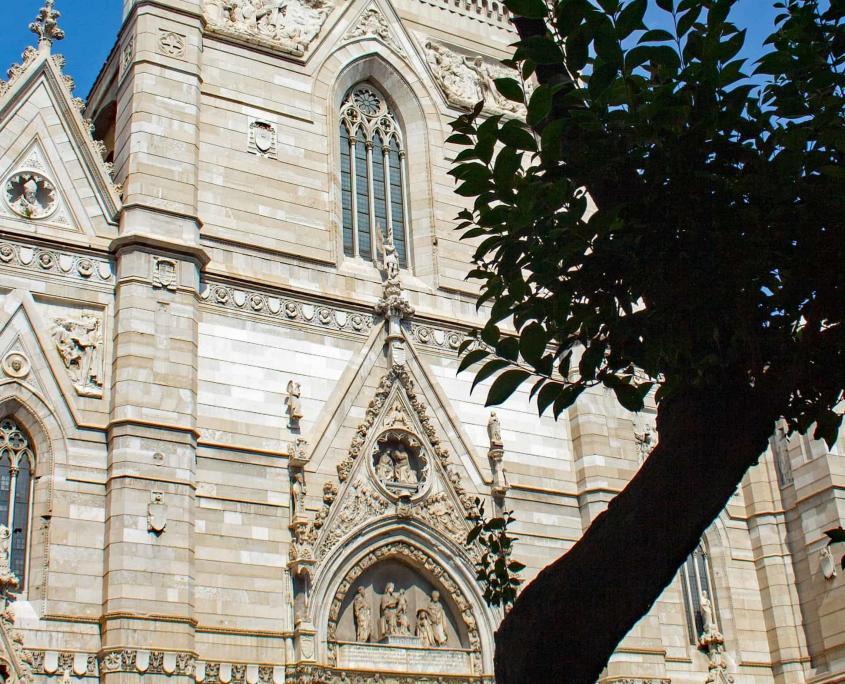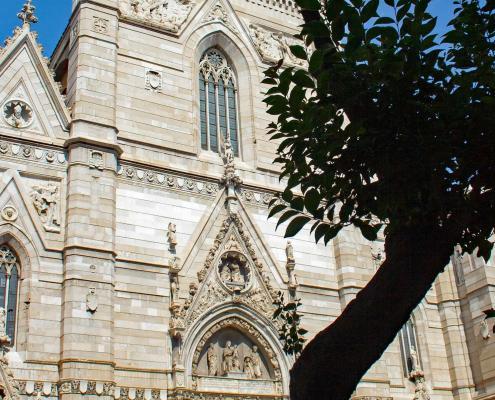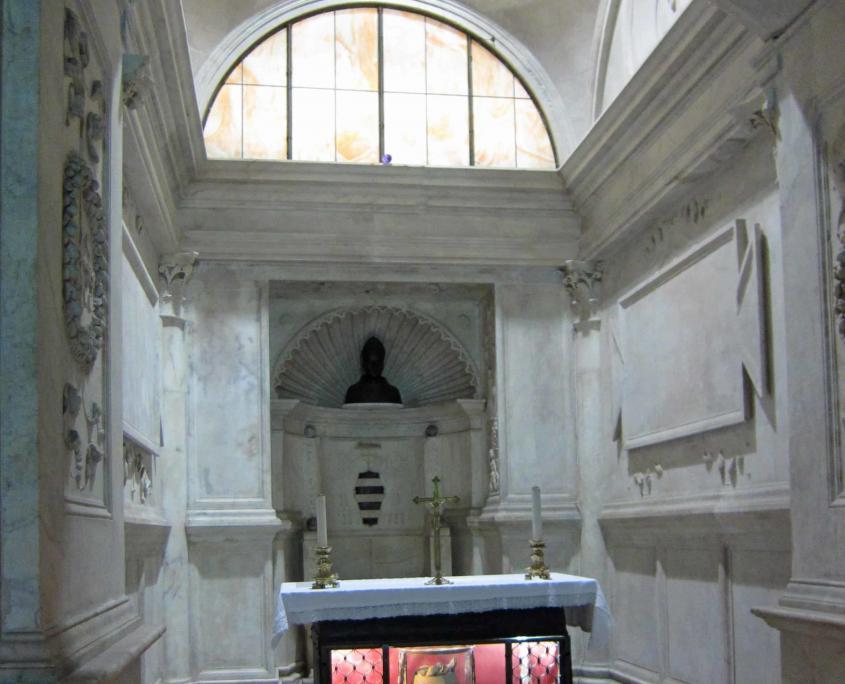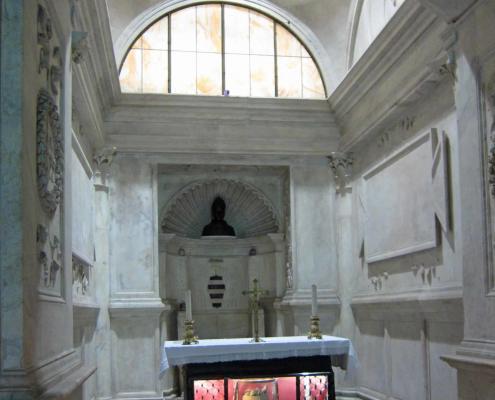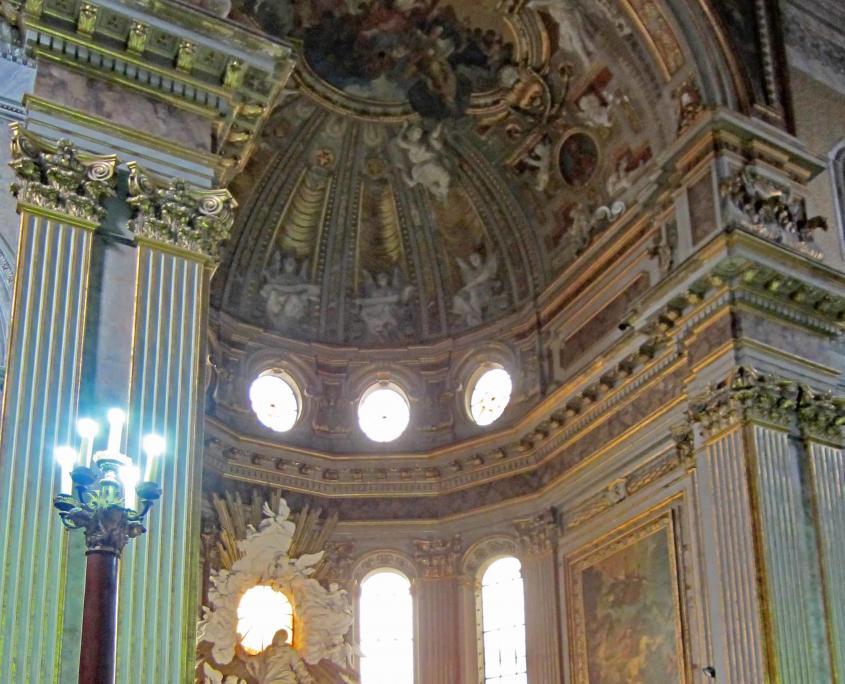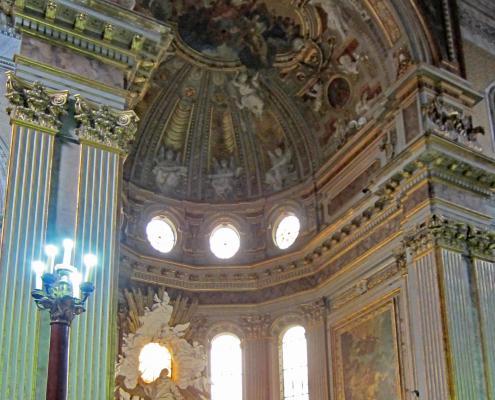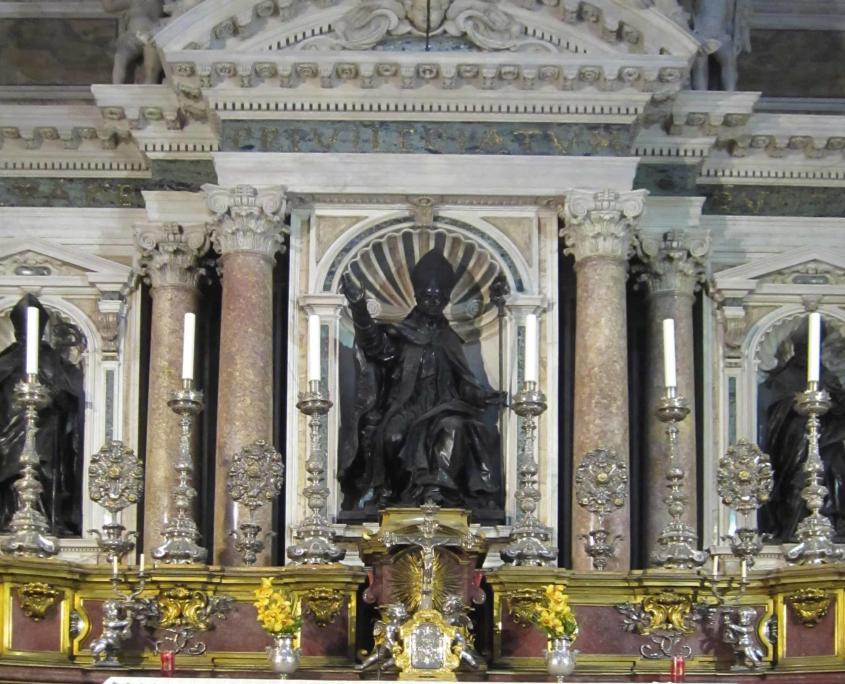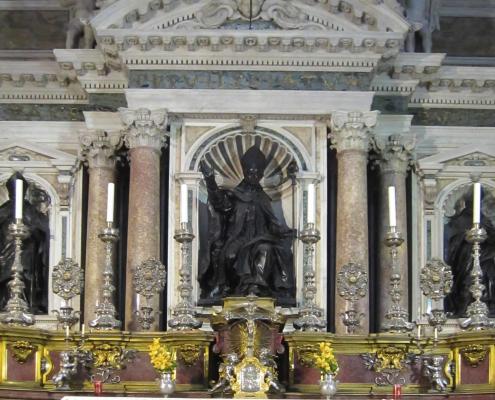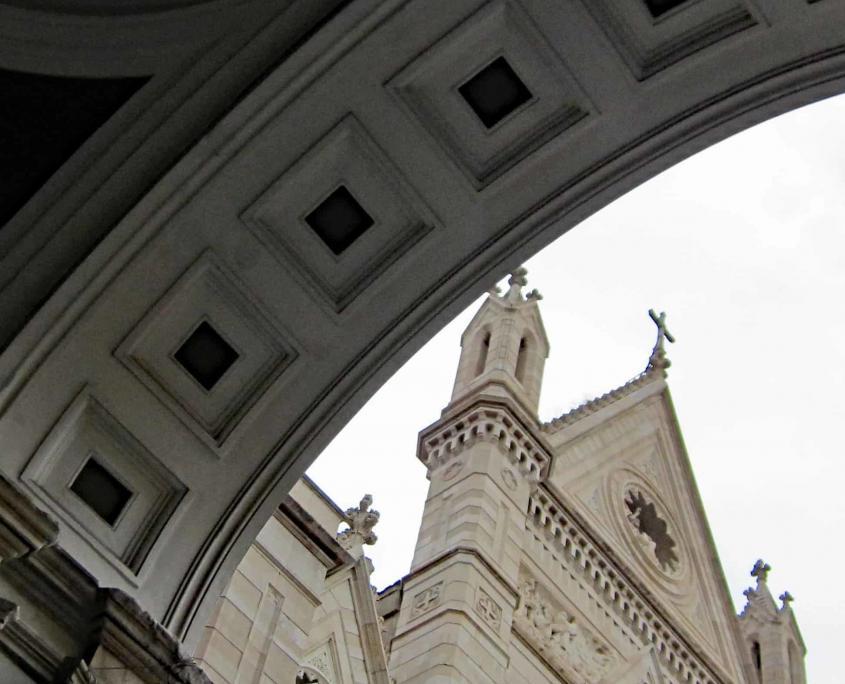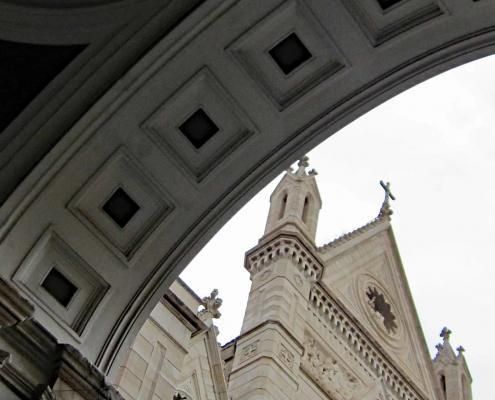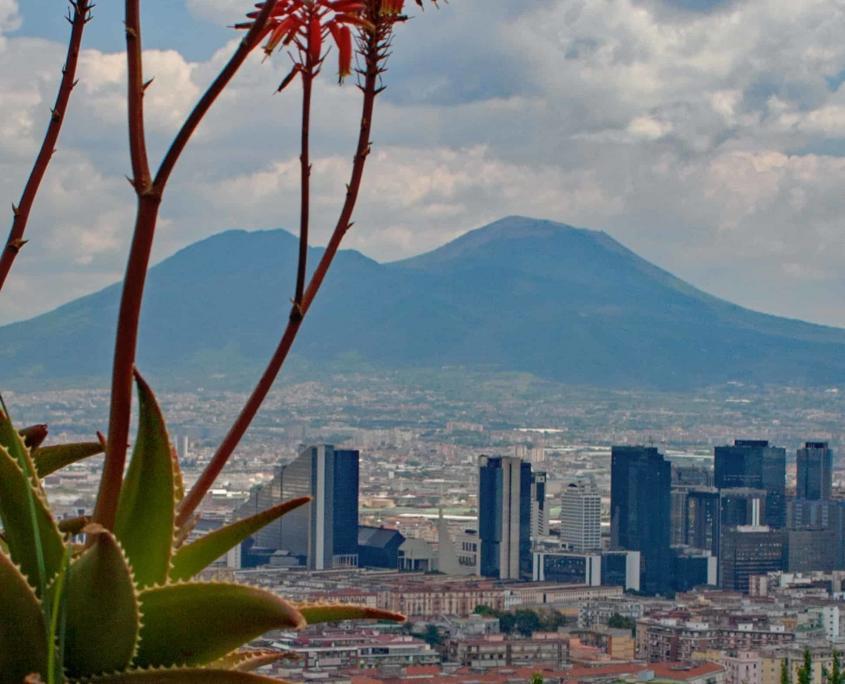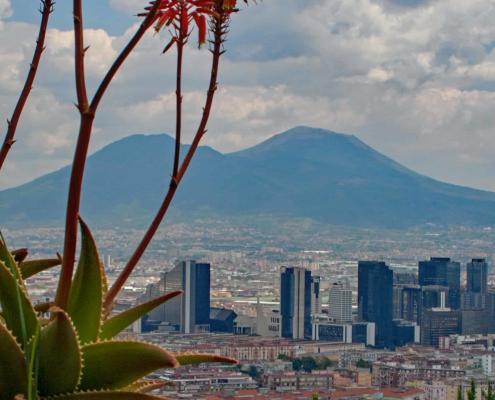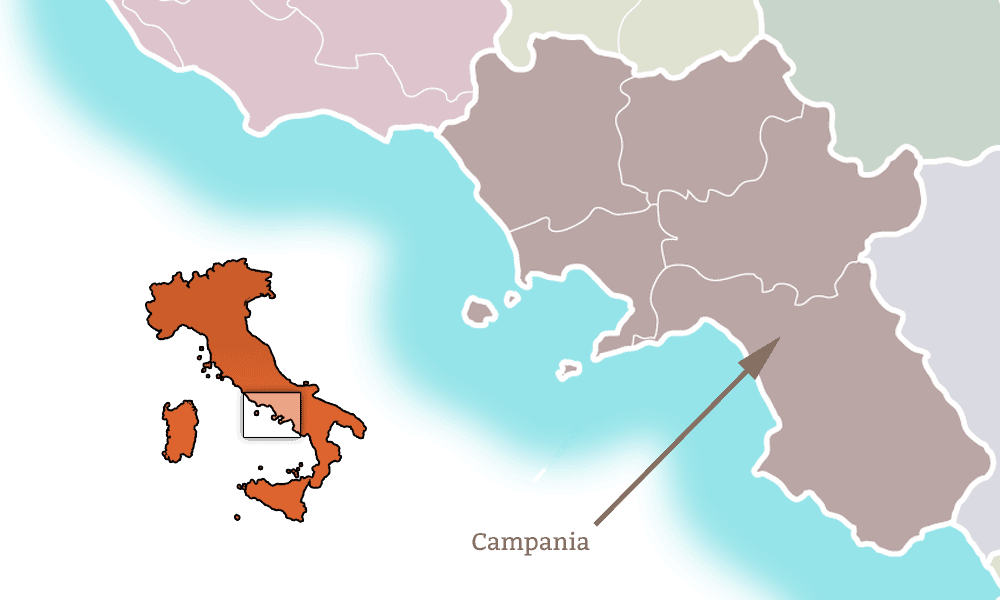The Cathedral of Naples (Cattedrale di Santa Maria Assunta)
In the Italian city map one searches in vain for the cathedral, but there is an inconspicuous place in front of the same, the Piazzetta Guglia del Duomo. Here is the main portal to the Cathedral of Santa Maria Assunta (Duomo). If you ask someone on the street for directions, you ask about the Cattedrale di San Gennaro, the patron saint of Naples. confused? Welcome to Italy!
You can’t step back far enough to take a photo of the portal. Buildings are too close. The Cathedral of Naples is worth noting in several respects. It is the seat of the archbishop and houses the oldest Baptistery in the Western world, San Giovanni in Fonte. The present cathedral was built at the request of King Carlo II of Naples on the ground of other churches, which had to give way. Hence the many names.
The ancient basilica of Santa Restituta, which is connected to the cathedral by being integrated into the cathedral, is still preserved. In 1313 the cathedral was completed and in 1314 the Assumption of the Virgin Mary was consecrated to the Santa Maria Assunta.
What to See at Naples Cathedral
The Basilica of Santa Restituta in the Cathedral of Naples
The ancient basilica of Santa Restituta was built at the same time as the Baptistery in early Christianity in the fourth century under the Emperor Constantine. It is divided into three naves with seven arcades on each side, which are supported by original antique columns. The basilica was first dedicated to Christ and later, in the eighth century, to the African saint Restituta, whose relics are kept here.
When the construction of the new cathedral began around 1300, part of the Santa Restituta basilica was demolished and rebuilt. After the earthquake of 1688, the interior of the church was restored, during which the ceiling was adorned with a painting depicting the arrival of Saint Restituta on Ischia. The right aisle leads from the basilica to the Baptistery of San Giovanni in Fonte. The entrance wall to the baptistery of San Giovanni in Fonte is decorated with mosaics in the early Christian style.
In the left aisle of the cathedral is the chapel of Santa Maria del Principio with the fresco painting depicting Christ on the throne. Behind the altar is a mosaic depicting the Madonna between St. Januarius and St. Restituta.
Baptistery San Giovanni in Fonte
The Baptistery of San Giovanni in Fonte is the oldest baptistery in all of Christianity. It is located to the right of the apse of the Santa Restituta Basilica in Naples. Like the Basilica of Santa Restituta, the construction of the Baptistery of San Giovanni in Fonte was initiated by the Roman Emperor Constantine (Flavio Valerio Aurelio Costantino 274 to 337). The construction of the baptistery was directed by the bishops of Naples, although the sources are not entirely unanimous. Bishop Severo (362-408) or Bishop Sotero (465-468) or Bishop Vincenzo (554-578).
The Baptistery of San Giovanni in Fonte is built in a square shape from small blocks of tufa. The top edges are rounded and merge into a dome covered with mosaics from the fifth century. A few fragments of the mosaics can still be seen today. The background dominates in the colors turquoise and green, with parts in gold. The dome of the vault is covered with a starry sky in gold, blue and white with eight rays of different lengths. The monogram of Christ is between the Greek letters Alpha and Omega. Above the cross, the hand of God wears a tied laurel wreath with ribbons fluttering at the ends.
The gold-based frame that surrounds the dome is decorated with branches, trees, fruit baskets on which birds sit. Peacocks, pheasants, partridges and parrots are depicted. A phoenix sits on a small hill between two palm trees. A blue curtain with golden threads and eight garlands of leaves, fruits and birds fall from its border. Four of these garlands with biblical scenes have survived.
Below the dome is the basin for the baptismal rituals.
The Succorpo Chapel and the Relics of Saint Januarius
From 1497 to 1508, the Succorpo chapel was built as a crypt in which the relics of St. Gennaro are kept. The Succorpo Chapel is located under the apse and is divided into three naves measuring 4 x 9 m by means of marble columns. In the middle is the Oliviero Carafa orante statue. The relics of St. Januarius are in a sarcophagus below the altar.
On the right-hand side inside the cathedral, a huge gate made of divorced iron leads to the chapel of St. Januarius (Saint Gennaro).
Chapel of St. Januarius
The chapel of St. Januarius was built at a time of crisis in Naples. Conflicts, the outbreak of the plague and volcanic eruptions accompanied the construction.
As a result of these events, on January 13, 1527, the anniversary of the transfer of the bones of the patron saint to Naples, the Napoletan people decided to build a beautiful new chapel in the cathedral.
The representatives of the six “Sedili Nobili” of Naples, i.e. the municipal deputies decided on the financing of the new chapel.
The Sedili of Naples were: Capuano, Nido, Montagna, Portanova, e Porto and the Sedile del Popolo
Francesco Grimaldi was the architect of the royal chapel of the treasure of San Gennaro. In 1646 the chapel was inaugurated in the baroque Napoletan style. The entrance is inside the Duomo, while the back with the obelisk is located opposite the Pio Ponte di Miscorderia church in Piazza Riario Sforza.
The Patron Saint of Naples San and the Legend of the Blood Miracle
The treasures of the patron saint of Naples are kept in the Chapel of St. Gennaro and the ritual of the blood miracle takes place here three times a year. Januarius is the patron saint of Naples, the protector of volcanic eruptions and the patron saint of goldsmiths.
Born in Benevento in the year 272 and died by beheading under Emperor Diocletian in Pozzuoli, September 305) Januarius was bishop and martyr and saint of the Catholic Church. San Gennaro became famous for the ritual of the blood miracle. This miracle of the liquefaction of the dried up blood was first documented on August 17, 1389. The blood miracle ceremony takes place three times a year. On certain holidays, the ampoules with the alleged blood of St. Januarius are brought into the chapel and kept at the altar. In a festive ceremony in front of the audience, the archbishop takes the ampoule with the blood in its holder and turns it, which is supposed to liquefy the blood. If the blood liquefies, this is interpreted as a good omen and Naples is spared from terrible events. Should it occasionally happen that the blood does not flow, the fear in Naples of an impending catastrophe increases. The days when the blood miracle of Naples is checked is May 1st (the feast of translation). Later in the year on the feast day of the patron saint San Gennaro on September 19th. And on December 16 as the commemoration of the warning of the eruption of Vesuvius in 1631.
From the Piazza Riario Sforza opposite the church Pio Monte delle Miscorderie, the dome of the Chapel of San Gennaro can be seen impressively. In the middle of the piazza is the obelisk of San Gennaro, erected in 1636.




